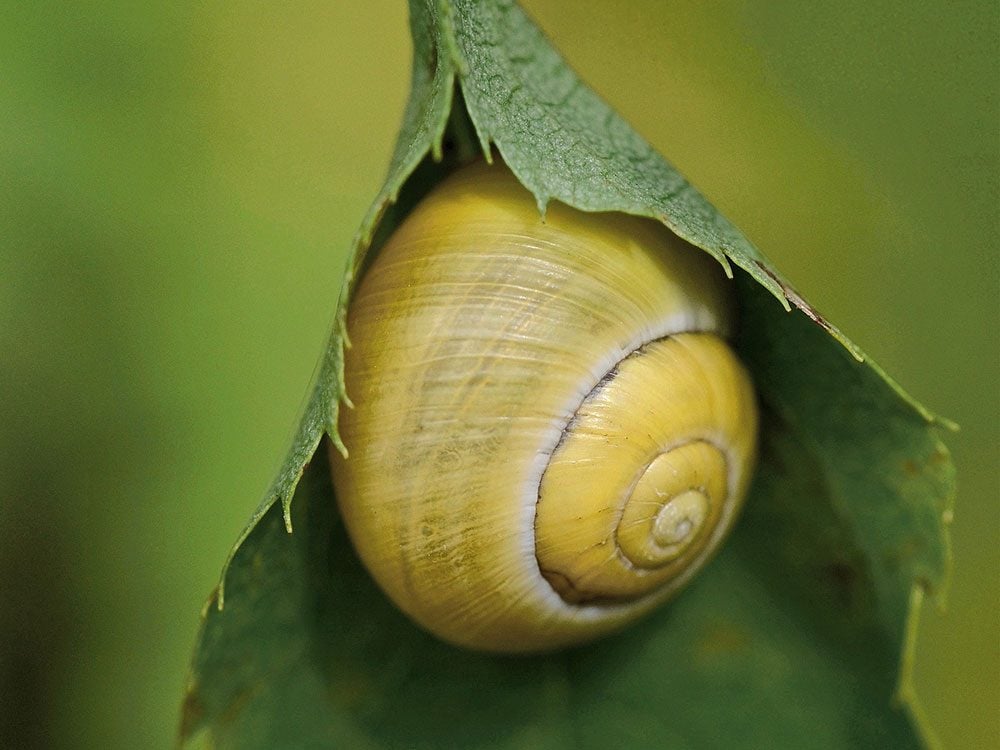
Macro Photography in Your Own Backyard
You don’t have to travel outside of Canada to encounter some exotic and unusual-looking creatures—they’re right here in our own backyards. I believe that the majority of Canadians are unaware of the hundreds of varieties of insects that are alive and thriving all around them. Yes, they see common flies, bees, wasps, mosquitos, ants and spiders, but if they were to take a closer look, they would be very surprised by what is lurking in their backyards and gardens.
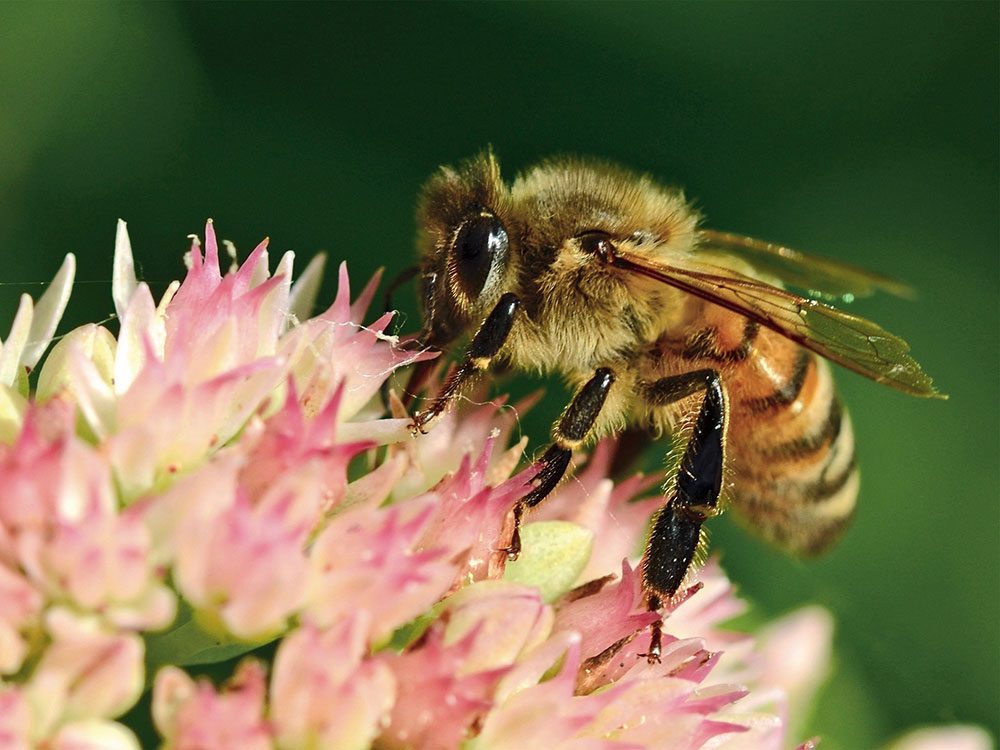
Honey Bee
I purchased a macro lens for my camera in 2014 that allows me to capture extreme close-ups of my subjects. Purchasing this piece of equipment instantly changed my world of photography. It opened up a whole new perspective on insects, and even ordinary objects, that surround us in our everyday life, but remain relatively unseen by most eyes.
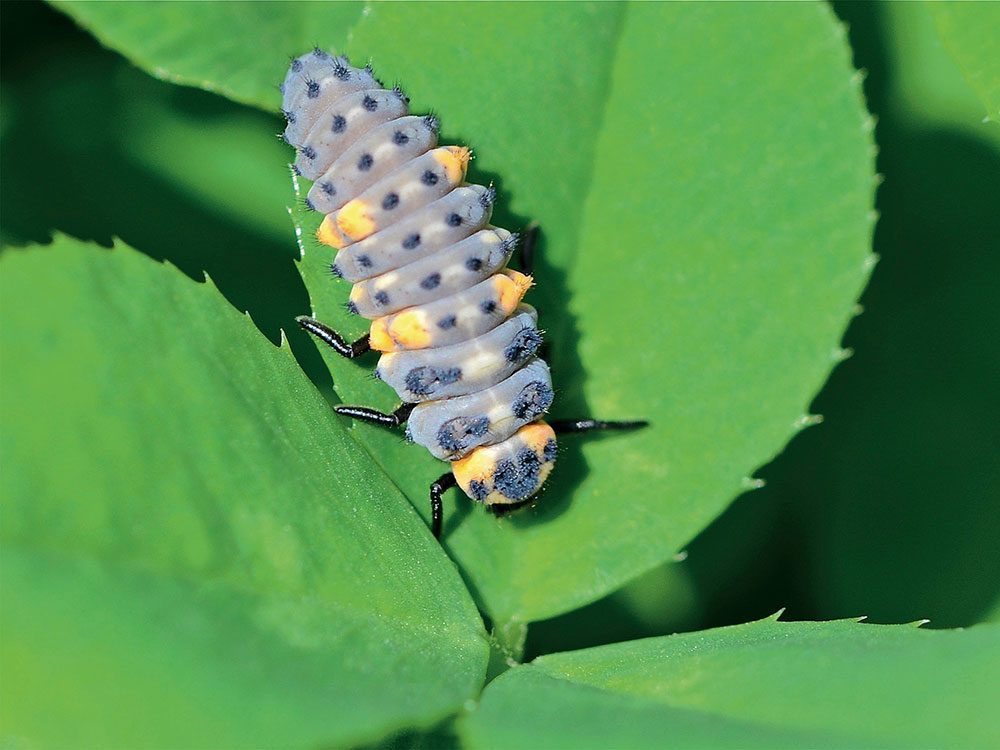
Ladybug Larva
Ordinary items such as raindrops on a clothesline, spiderwebs and small feathers become extraordinary under a macro lens. It takes a very steady hand, or a tripod, to manually focus on the subject with this lens. You can use auto focus, but when you are ten to 20 centimetres away from a subject, the focus area is quite exacting.
Check out more garden pictures from across Canada.
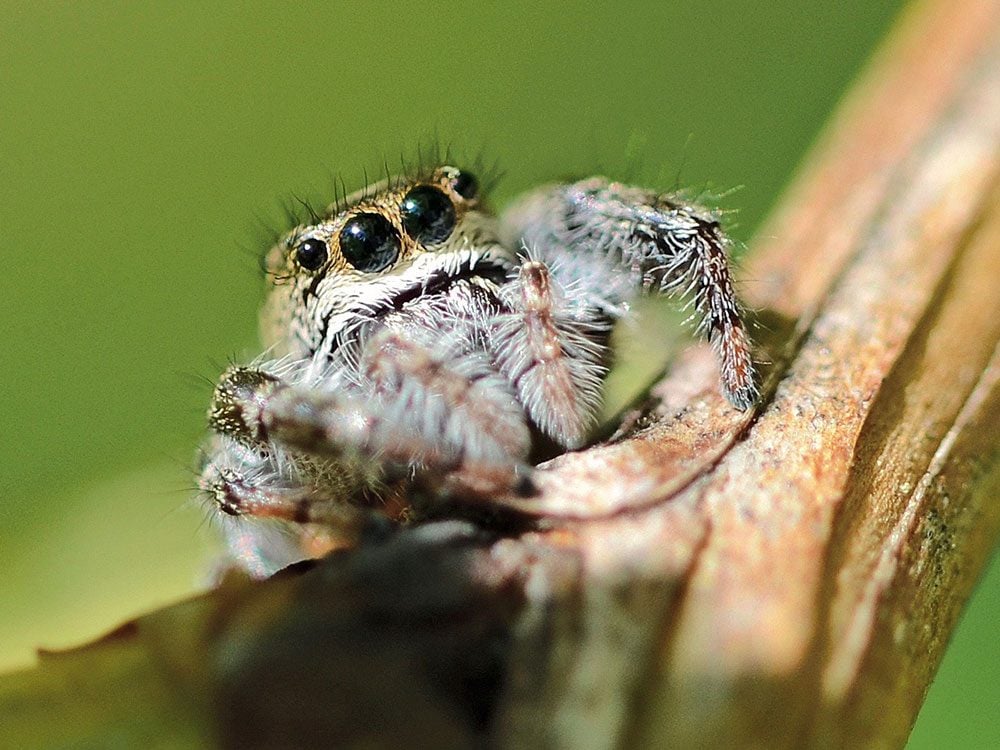
Jumping Spider
As with a human subject, I try to be sure that the insect’s eyes are primarily in focus. This gets a little tricky, as you don’t want to scare away the insect while getting closer. I don’t tend to feel fear while trying to capture a close-up shot of a wasp, for example, as I am so focused on getting the picture. I also believe they are mesmerized by the clicking noise of the shutter.
Don’t miss this gorgeous gallery of backyard photography.
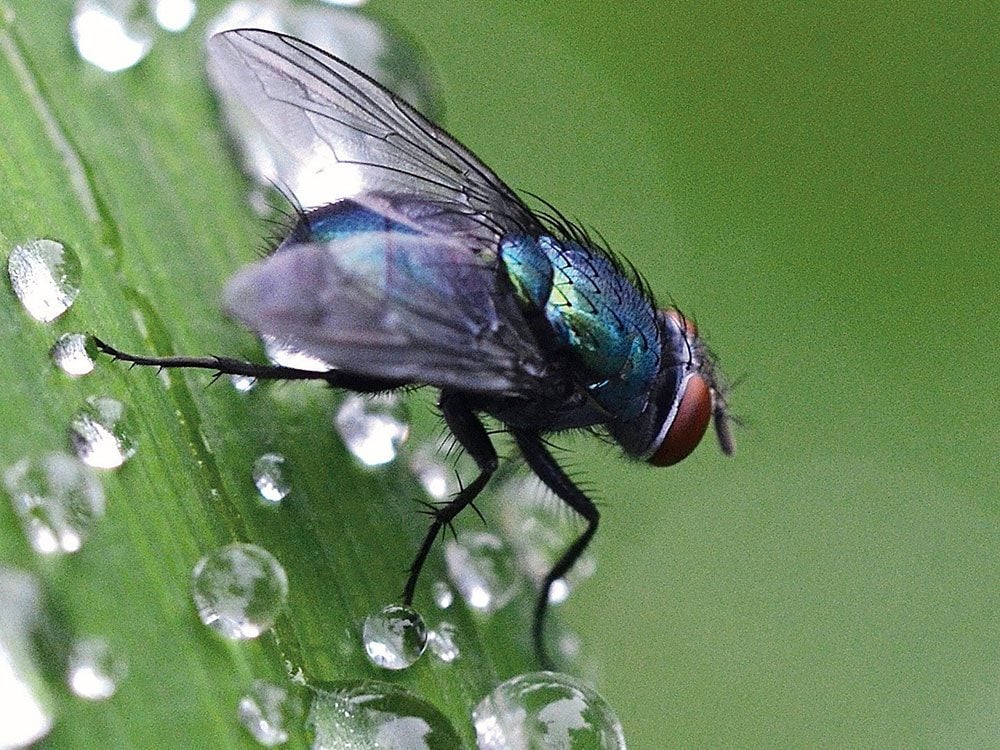
Common House Fly
I was immediately surprised and amazed at how insects appeared through my camera’s macro lens, including the common house fly. Sure, they are generally disgusting, but are also built like some sort of super flying machine, with suction pads on their feet and alien-looking head parts.
For more fun with scale, check out this larger-than-life roundup of Canada’s biggest roadside attractions.
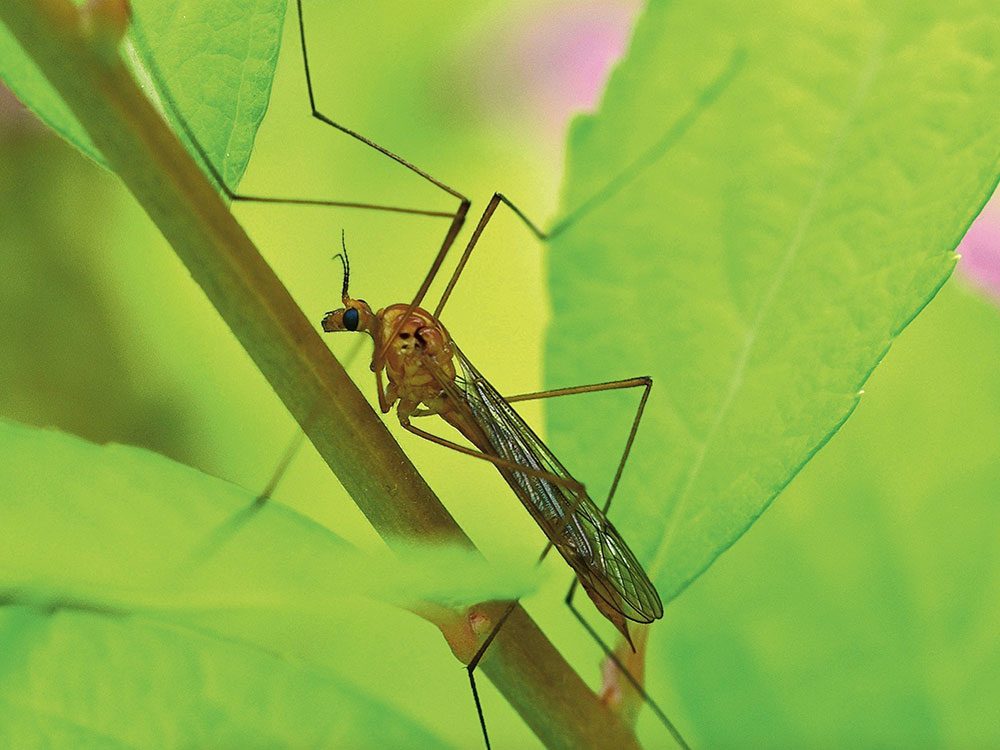
Crane Fly
One of my first encounters was the crane fly. It has extremely long legs and a head that somewhat resembles a horse’s head, because of its very long snout called a rostrum. It also has defined knobs sticking out of the side of its body. These are called halteres, which control the fly’s bodily rotation in flight.
Dealing with flying pests indoors? Here’s how to get rid of fungus gnats once and for all.
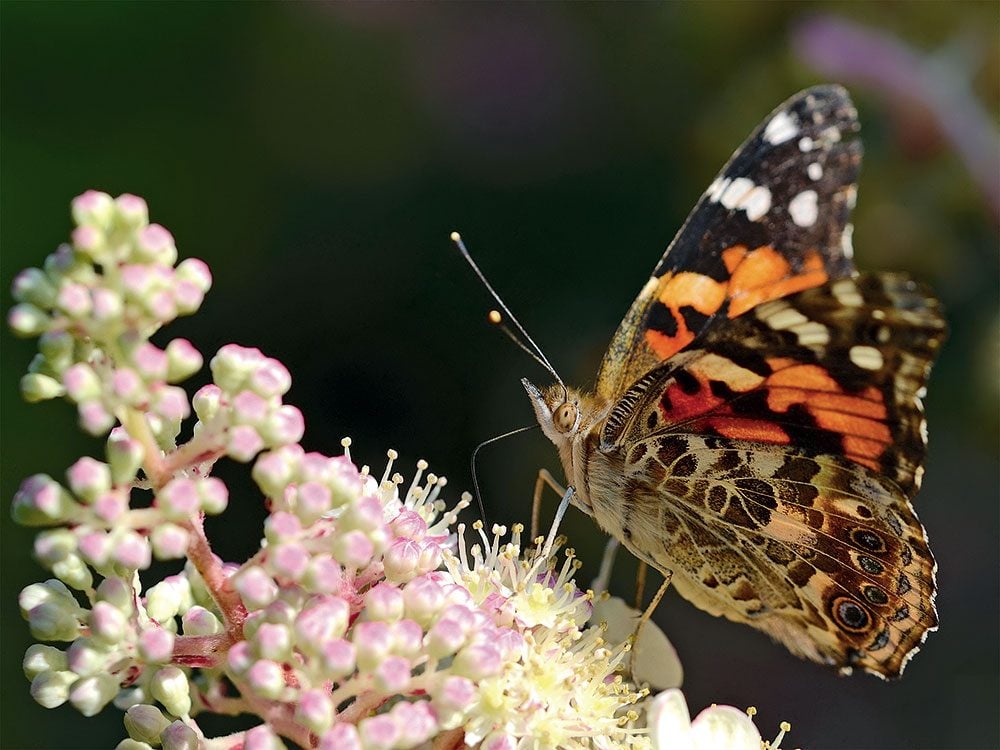
Painted Lady Butterfly
Every day I would scour the backyard vegetation for anything that moved. On frequent walks in the nearby woods, my camera at the ready, I would be on the lookout for insects. On one such walk something large flew across my path. I thought it was a hummingbird, but it actually turned out to be a cicada. Amazingly, it landed on a branch a few feet away and I was able to get a shot. That was the only time in the past four years that I’ve spotted a cicada, so it pays to be prepared.
Our neighbours wondered what I was always doing in our yard, camera in hand, suddenly focusing my camera on something unseen by them. I put together a slideshow of about 200 close-up photos of various insects, added a soundtrack and invited them over to view the 20-minute show. Everyone was amazed. What excited me most was that they didn’t have any idea that these insects were part of their everyday life.
Find out which plants will attract butterflies and birds to your garden.
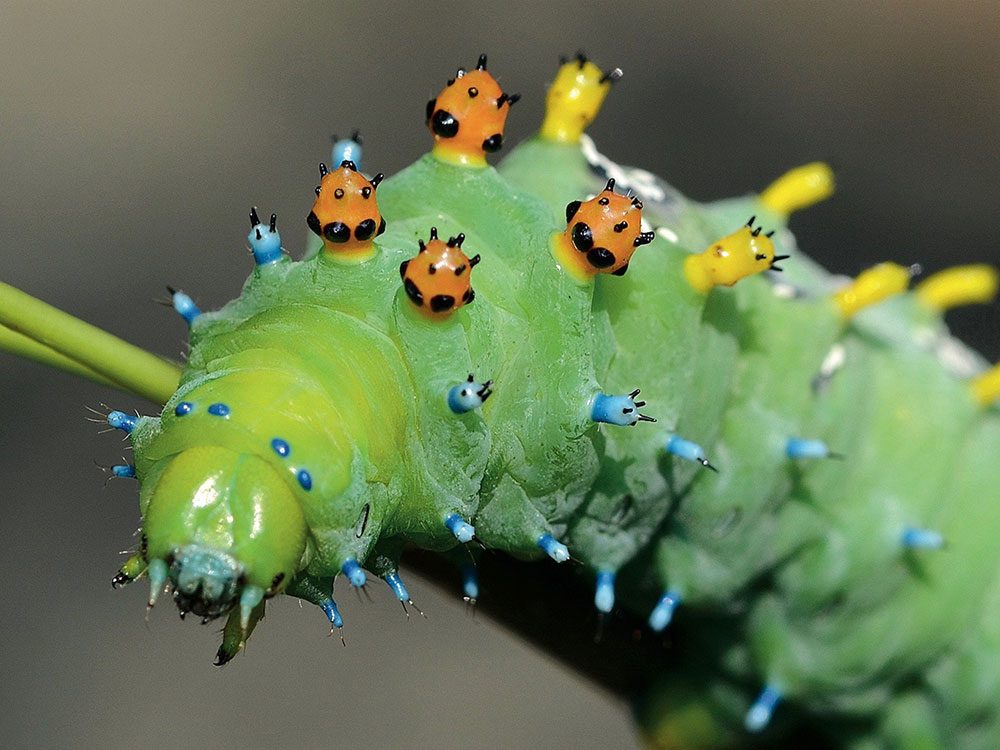
Caterpillar
Through spring, summer and fall, every day introduces new and exciting insects in various stages of their lives. It has been four years now and I still discover insects that I haven’t seen before. Since I have become more tuned-in to the nature around me, it’s incredible the things I notice and am able to photograph.
Discover the best wildlife experience in every province.
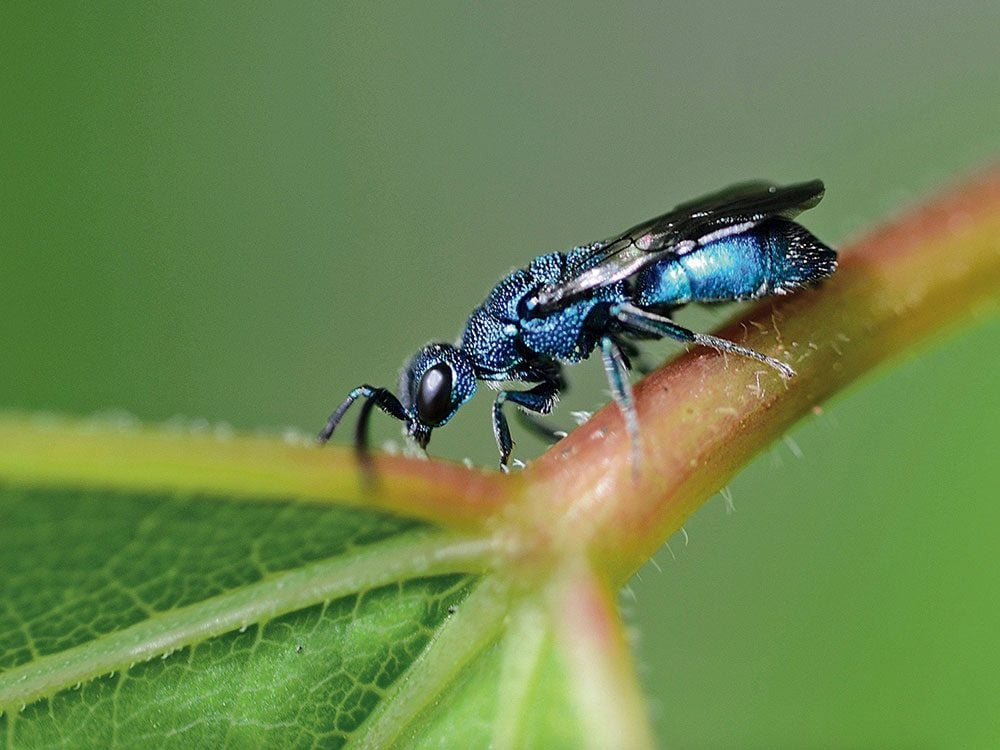
Cuckoo Wasp
Developing a keen eye has brought amazing photo ops my way: the excitement of spotting a monarch butterfly; the amazing colour of the blue cuckoo wasp; fascinating ants tending their aphid farm; the unbelievable assassin or robber fly, which catches other flies and prey in-flight—and so on! I try to share my favourite daily photographs on my Facebook page, as I like to introduce my friends and family to the miniature world around us. I believe I have opened their eyes to numerous insects that they were unaware existed here in Canada. Some are beneficial to our gardens while others are invasive and cause a lot of damage. Either way, I am always intrigued by photographing them.
Here are 20 gardening tips that’ll save you time, money and effort.
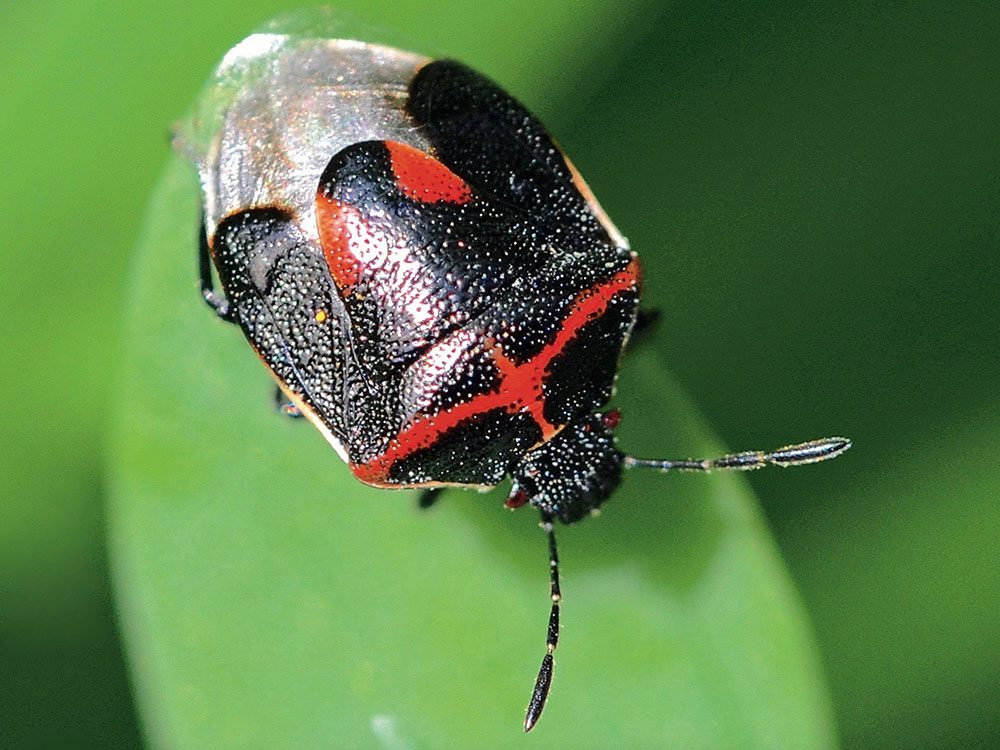
Twice Stabbed Stink Bug
In Canada, we get a respite from dealing with insects in winter, but they are a hardy bunch and always return, in one form or another, in spring. When they do, my camera and I are always waiting.
You’ll find more of Russ’s fantastic snapshots in this gallery of rainbow pictures from across Canada.